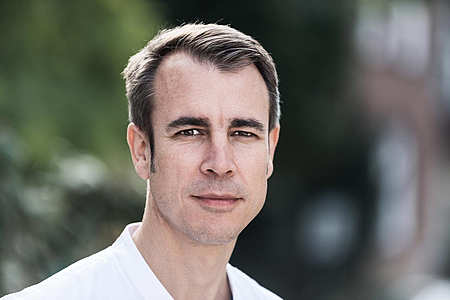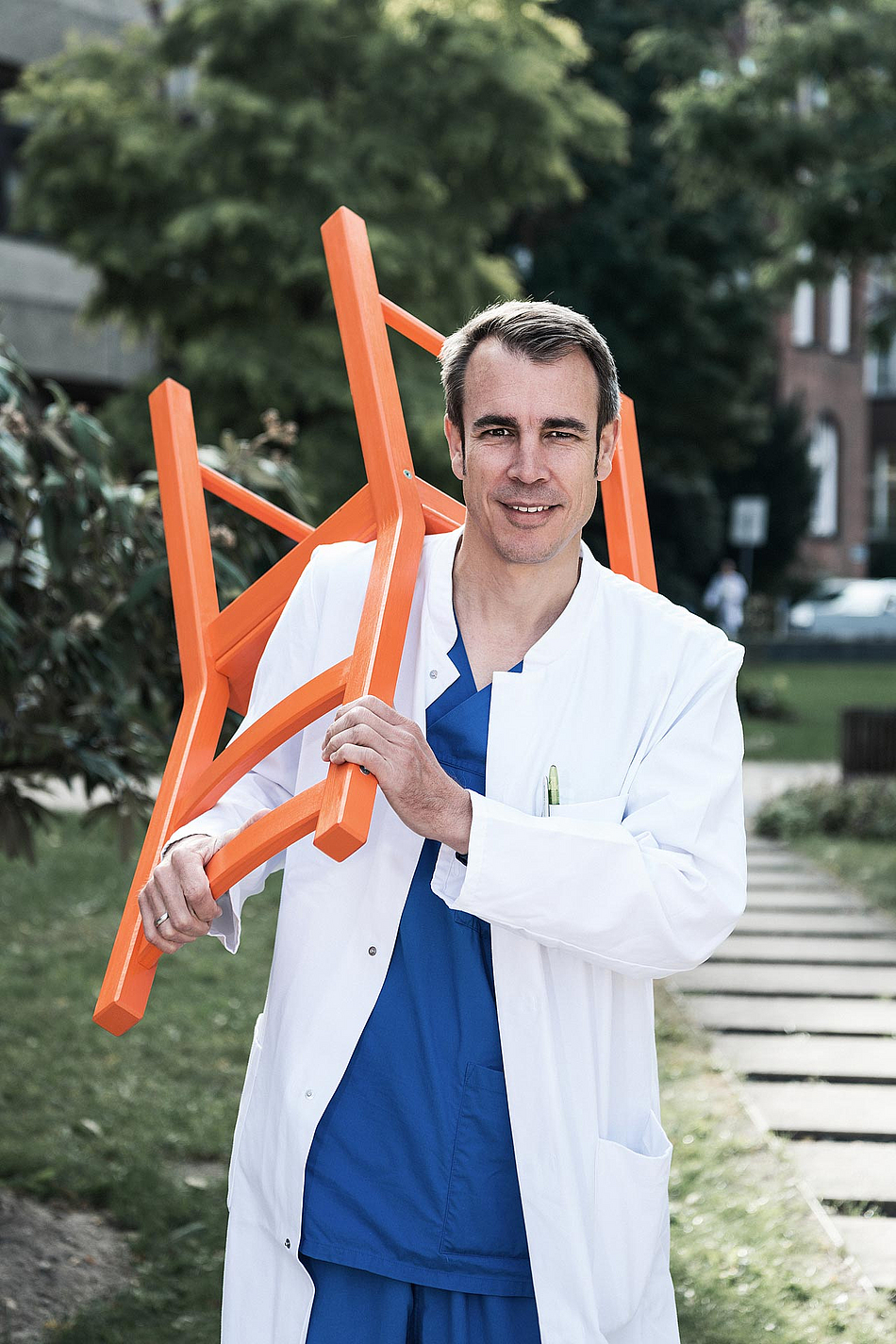Aortic valve stenoses and infirmity: keeping pace with technical innovation
Professor Knebel, what is it about research that fascinates you?
A great deal. In my view, medicine is progressing extremely rapidly. Research accompanies technical progress, while at the same time generating new questions that in turn enable technical progress. After my studies I thought that medicine was a relatively static subject. Yet, it‘s so dynamic and there are actually hardly any fundamental principles that are not being constantly called into question. This wasn’t clear to me at first, but now I find it fascinating to be able to take part in the process of questioning assumptions.
So, you are not deterred by the fact that you have to keep on learning, learning and never resting on your knowledge?
Quite the opposite: it’s even fun. I’d find it discouraging if I didn’t have to educate myself further.
You’re a Senior Physician and carry out research at the same time: what’s your daily work routine like?
My daily work routine covers the whole varied spectrum of cardiology. From conservative cardiology – that is, primarily heart imaging – and in-patient care to out-patient care or heart catheter examinations. I also do emergency room duty and all in all, I’m heavily involved in the clinical care of patients. In the research project, we examine the extent to which old and infirm persons with severe aortic stenosis also benefit from the application of a cardiac valve.
Could you go into that in greater detail?
An aortic valve stenosis is a narrowing of the heart valve located between the left heart ventricle and the aorta, which ensures that the entire body is supplied with blood. With increasing age, this valve often becomes calcified and thus narrower. There are meanwhile some elegant methods of treating this narrowing of the heart valve by inserting a new valve through the blood vessels. Here, in contrast to earlier, conventional methods, it’s no longer necessary to open the ribcage. This has become a very common operation and the question that’s interesting from a scientific point of view is: do all patients benefit equally from it? The question is particularly relevant in the case of old and infirm patients who are less physically active in their lives. To answer this question, we determine the degree of patients’ infirmity, based for example on their physical mobility and memory performance, as well as the success of the heart valve implantation. Here, the main objective is not to achieve immediate success, i.e. to see whether it would be technically possible to insert the valve. Instead, we want to know whether the patient benefits from it in the long run, how quickly they recover and how much physical strain they can subsequently withstand. In the first step, we want to observe how strong the correlation is between infirmity and the success of the operation.

Funding program
BIH Clinical Fellows
Funding period
2016 – 2018
Project title
Identifying predictors for positive outcome after interventional aortic valve replacement
Research area
Cardiology
Institution
Charité – Universitätsmedizin Berlin
2015
Appointment as Adjunct Professor
Since 1999
Resident physician, consulting physician (internal medicine and cardiology) and senior physician, Medical Department, Division of Cardiology and Angiology, Charité – Universitätsmedizin Berlin
1992 –1999
Medical degree in Munich, London (Scholarship of the German Academic Scholarship Foundation), Berlin and in the USA
Is the second step to evaluate which patients would meaningfully benefit from the operation?
Exactly. Underlying this is the fascinating question as to whether part of the infirmity attributed to these patients is not so much a manifestation of reduced mental or physical performance, but the heart valve disease itself. In that case, we’d have to revise the whole concept of infirmity. The patients’ problem would primarily be with their valves, and so if that problem was remedied, they would become more able-bodied again.
What led you to that question?
Basically, the question concerned us because it’s something we’re confronted with every day. People are getting older, so we have lots of older, infirm patients. This results in diseases that would never have arisen in the past, including aortic valve stenosis. We have to offer these people a solution. It isn’t an option to say: “Technically, we can insert a valve – but we don’t know whether it’s going to help.”
What’s been the biggest challenge so far?
Firstly, the development of this valve implantation process is an unbelievably dynamic field. New and better valves are constantly coming onto the market. As a result, we’re lagging behind technical progress with our analyses. Secondly, the definition of infirmity is also changing, as our scientific understanding of it increases more and more. Both our method and the therapy that we’re evaluating are constantly changing.
What words of wisdom would you like to impart to younger scientists to help them on their way?
Always remain persistent, never give up and keep your eyes open. Here, the expression “think beyond expectations” applies. We shouldn’t regard the obvious as a given, but should constantly be asking ourselves: is what’s written down really so certain and are our fundamental scientific principles really so unshakeable?
September 2017 / TO
